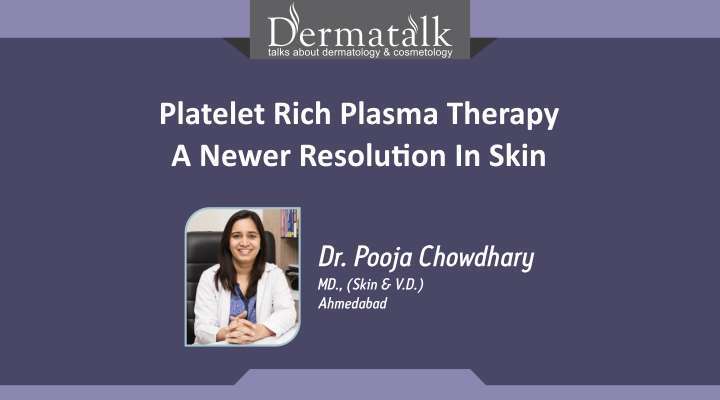However PRP has been used in the past by orthopedic surgeons for several years to speed up soft-tissue healing from sports injuries like ligament tear as well as to treat burn victims and patients with severe ulcers. It has been since mid-1990s as an adjunct to implant therapy in dentistry and oral surgery.
The therapy involves injecting of blood plasma that contains approximately five times the platelets found in normal circulating blood.
Mechanism of PRP
As a concentrated source of autologous platelets, PRP contains (and releases through degranulation) several different growth factors like PDGF and VGEF and other cytokines that stimulate healing. The growth factors, when released, induce the production of collagen and generation of new capillaries to rejuvenate the skin.
%20(1)docx%20-%20Microsoft%20Word_2016-3-18_13-31-25_No-00.png)
A steady trend over the past 15 years has been for patients to seek less-invasive procedures for facial rejuvenation,making PRP popular.
It also appeals to the patient who is looking for a natural approach to volumizing the face and treating or reducing fine lines.
Indications of PRP in Dermatology
· Hair restoration, Androgenetic alopecia.
· Volume loss in the face, hands, and neck — particularly the crepey skin under the eyes and neck.
· Skin rejuvenation to improve skin texture and elasticity .
· Fine lines and wrinkles.
· Acne scars,Post traumatic scars.
· Stretch marks .
· Adjuvant with Hair transplants at the recipient site to stimulate growth of transplanted grafts.
PRP preparation.
PRP is prepared either manually or by the use of automated devices just prior to the procedure. The process must be carried under strict aseptic conditions and optimum temperature regulations to ensure platelet viability. An anticoagulant, usually anticoagulant citrate dextrose solution formula A (ACD-A) or sodium citrate is used to prevent platelet aggregation
The Manual double spin method yields much higher concentration of platelets as compared to the single spin method.
This method involves separation of blood cells and plasma by a slow spin which is followed by a fast “hard spin”.
platelet-rich plasma is separated from whole blood by ‘light-spin’ centrifugation and subsequently the platelets are concentrated by ‘heavy-spin’ centrifugation with removal of the supernatant plasma.”
The basic principle behind the PRP separation procedure is as follows.
The slow spin centrifugation process separates blood components owing to their different specific gravities, i.e., RBCs being the heaviest, followed by WBCs, whereas platelets are the lightest. Platelets are concentrated right on top of the buffy coat layer. Subsequent centrifugation is faster, so that platelets are spun down and separate as a pellet at the bottom of the tube. Approximately 3/4 of the supernatant(PPP- platelet poor plasma) is discarded and the platelet-rich pellet is resuspended in remaining amount of plasma. The resulting suspension is used as PRP. Calcium chloride (CaCl 2 ) or thrombin can be used as an activator and is added to Prepared PRP before injecting.
Factors affecting PRP yield and results
· Patients baseline platelet count.
· Strict temperature regulations.
· Rate and time of spin.
· Size and shape of containers used
· Anticoagulant used
.Performing PRP
An informed consent should be taken. A baseline complete blood count is done. Patient should be advise against use of NSAIDs or multi vitamins 2 weeks prior to therapy. Patient is applied Topical anesthesia under occlusion.Intradermal injection of Prepared PRP are given. For hair loss the PRP can be done either by direct injections or as scalp mesotherapy along with dermarollers.
Duration of therapy:
A course of treatments involves 3-4 appointments spaced 1 month apart and results can be maintained with a single repeat treatment every 6-12 months
Frequently asked Questions
1. How long does the treatment take?
Each session takes an approximate of 45 to 60 minutes.
2. Is it painful?
Since topical anaesthesia is used before injecting, it becomes comfortable.
However patient experiences a burning sensation immediately after injecting PRP, which subsides in few hours.
3. Can I go out after the procedure?
Patients develop swelling and bruises over face after the procedure. Swelling takes 24 to 36 hours to settle, while bruising may take 1 to 2 weeks.
4. When do I see results?
The results are subtle, with gradual improvement in the injected area over a 3- to 5-week period. Full correction occurs at 4-7 weeks and can last as long as 18 months. Better results are seen with a total of 2-3 treatments given 3-4 weeks apart. Patients can expect to see better results as they receive more treatments. With time, the results get better and better.
5. Can I get it done before a function?
No. since the patients tend to develop bruises due to use of anticoagulants, the procedure is not performed for 2 weeks preceeding any major social occasion.
6. What are the risks or complications?
Because this is made from the patient’s own blood, there is no risk for rejection, infection, or an allergic reaction.
7. How does PRP therapy compare with injections of filler/ Botox or surgical facelifts?
PRP is not a substitute to BOTOX/Fillers. This procedure can be combined with dermal fillers, Botox injections, and laser surgery, as well as facial surgery. PRP builds tissue over time, hence natural repairing occurs whereas traditional filler breaks down over time and are temporary.






